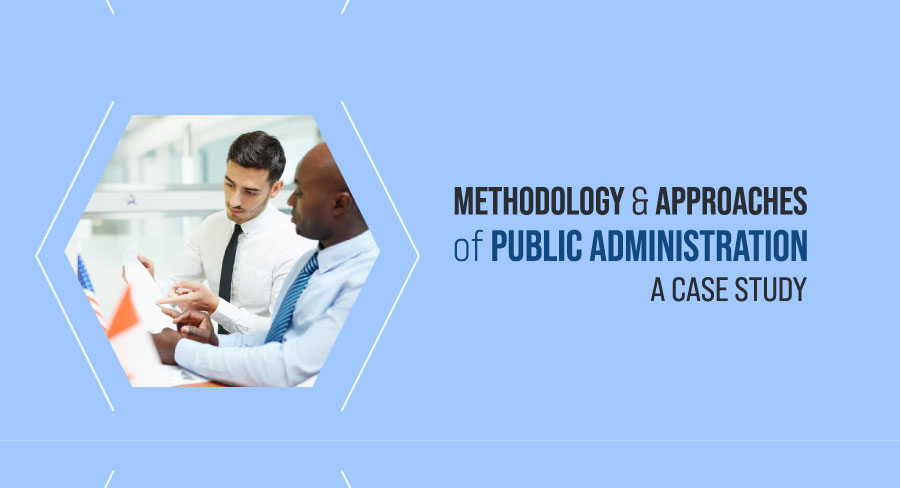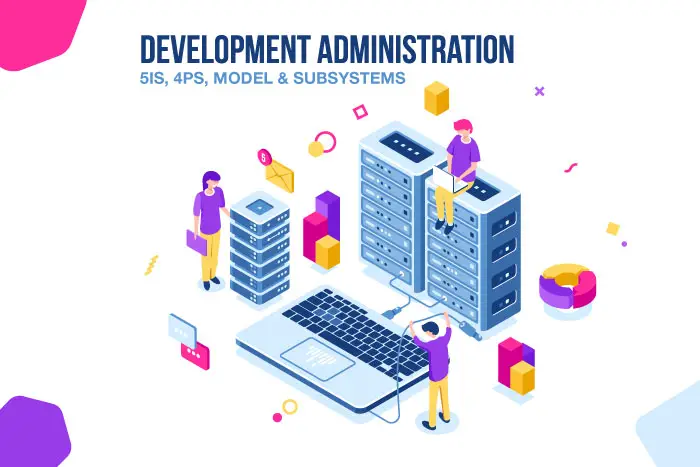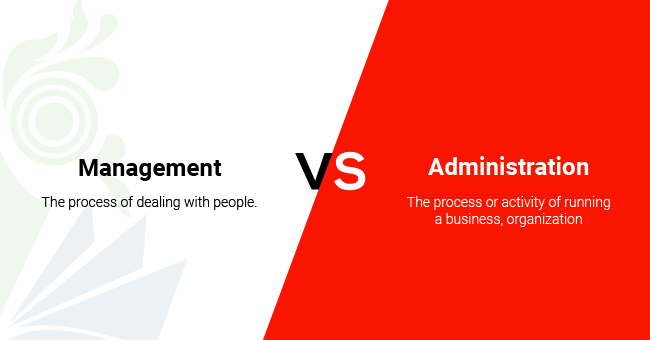Methodology and Approaches of Public Administration; Easy Case Study
The methodologies and approaches of public administration refer to the various strategies, frameworks, and principles that are used to manage and govern public organizations, deliver public services, and shape public policies. These methodologies and approaches provide a structured way to address the challenges and complexities of public administration.
Methodology and approaches of public administration encompasses various approaches, including bureaucratic, New Public Management, public choice theory, and more. It seeks efficient and effective governance, emphasizing ethics, performance, participation, and adaptability to meet the needs of society.
Methodology and Approaches of Public Administration
Public administration is a multifaceted field that encompasses the management and implementation of public policies and services. Various methodologies and approaches are employed in the study and practice of public administration. Here are some of the major points of the methodology and approaches of public administration commonly used:
- Traditional/Public Management Approach: This approach focuses on the efficient and effective management of public organizations. It often draws from principles of classical management theory to improve organizational efficiency, productivity, and accountability.
- New Public Management (NPM) Approach: NPM emphasizes applying private-sector management practices to the public sector. It involves concepts like performance measurement, competition, outsourcing, and decentralization to improve the delivery of public services.
- Public Choice Theory: Public choice theory applies economic principles to the study of public administration. It assumes that individuals act rationally and in their self-interest, which can lead to insights into the behavior of public officials, voters, and interest groups.
- Institutionalism: Institutionalism examines the role of institutions and their impact on public administration. It considers how formal and informal rules, norms, and organizational structures influence administrative behavior.
- Policy Analysis: Policy analysis involves evaluating public policies and programs to determine their effectiveness, efficiency, and impact. This approach often utilizes tools such as cost-benefit analysis and program evaluation.
- Network Governance: Network governance focuses on the collaborative relationships between public, private, and nonprofit sectors. It recognizes that many public policy issues are too complex for a single organization to address and promotes cooperation among various stakeholders.
- Public Service Ethos: This approach emphasizes the importance of public service values and ethics in public administration. It encourages public servants to act in the public interest and uphold principles of accountability, transparency, and integrity.
- Critical Theory: Critical theory examines power structures, social justice, and inequality within public administration. It seeks to address issues of oppression, discrimination, and injustice in the public sector.
- Human Resource Management (HRM): HRM is a specialized approach that focuses on managing human resources within public organizations. It involves strategies for recruitment, training, motivation, and performance evaluation of public employees.
- Public-Private Partnerships (PPP): This approach involves collaboration between public and private entities to deliver public services and infrastructure. PPPs are often used in areas like transportation, healthcare, and education.
- E-Government: E-Government emphasizes the use of information technology to enhance the delivery of government services, improve transparency, and engage citizens in the policy-making process.
- Comparative Public Administration: This approach involves comparing public administration systems, practices, and policies across different countries to gain insights and learn from best practices.
- Behavioral Science Approach: This approach applies insights from psychology and sociology to understand the behavior of public officials and citizens in the context of public administration.
- Environmental and Sustainable Development Approach: Focuses on integrating environmental sustainability and sustainable development principles into public administration and policy-making.

Challenges of Methodology and Approaches of Public Administration
Here are the challenges of methodology and approaches of public administration in a concise bullet-point format:
- Complexity and difficulty in implementation
- Resistance to change within bureaucratic structures
- Potential for one-size-fits-all solutions
- Resource constraints for implementation
- Short-term focus at the expense of long-term planning
- Insufficient citizen engagement
- Risk of unintended consequences
- Data and measurement difficulties
- Bureaucratic inertia
- Risk of exacerbating inequalities
- Public resistance to certain approaches
- Overemphasis on efficiency
- Institutional knowledge loss with frequent changes
- External factors affecting implementation
- Legal and ethical concerns.
The methodology and approaches of public administration is not mutually exclusive, and practitioners often combine elements from several of them to address the complexities of public administration. The choice of methodology or approach depends on the specific context and objectives of a given public administration initiative or research project.
CASE STUDY: Implementing Maternal and Child Health Program
Background
In a developing country grappling with high maternal and child mortality rates, the government, in collaboration with international organizations, embarked on a Maternal and Child Health (MCH) program.
Methodologies and Approaches Applied
In a developing country struggling with high maternal and child mortality rates, the government and international organizations collaborate to launch a Maternal and Child Health (MCH) program. The implementation of this program draws upon multiple public administration approaches.
New Public Management (NPM) principles are applied to enhance efficiency, featuring decentralization, performance-based financing, and competition among service providers. Policy analysis is used to prioritize interventions based on cost-benefit analysis, ensuring optimal resource allocation. Human Resource Management (HRM) involves investing in healthcare worker training and motivation.
Public Private Partnerships (PPP) are leveraged to expand healthcare access, especially in remote regions. An e-Government system is introduced to improve data collection, monitoring, and reporting, facilitating real-time tracking of maternal and child health indicators. Comparative Public Administration is used to learn from neighboring countries’ successful MCH programs.
Despite resource constraints and resistance to change, this integrated approach leads to reductions in maternal and child mortality, improved access to healthcare in remote areas, better-trained healthcare workers, and enhanced data-driven decision-making, demonstrating the effectiveness of combining various methodologies and approaches in public administration to address complex public health challenges.
Challenges
In the course of implementing the Maternal and Child Health (MCH) program, several challenges emerged. The program grappled with resource constraints, given limited funding and resources, necessitating innovative financing solutions and careful resource allocation to ensure effective implementation. Resistance to change was encountered, particularly among healthcare workers and local authorities, who found it challenging to adapt to the changes introduced by New Public Management (NPM).
Addressing this resistance demanded extensive engagement and training efforts to overcome the initial pushback. Additionally, the program encountered difficulties in ensuring the accuracy and completeness of health data, especially in remote areas, which posed challenges in the implementation of the e-Government approach. Despite earnest efforts to provide equal access, some remote communities still faced disparities in healthcare access and quality, reflecting the persistent issue of healthcare inequality.
Outcomes
Over the span of a few years, the Maternal and Child Health (MCH) program demonstrated significant positive outcomes, including a notable reduction in maternal and child mortality rates, the expansion of healthcare services in remote regions through public-private partnerships, the improvement of healthcare worker training and motivation, and the enhancement of data-driven decision-making and monitoring facilitated by the e-Government system.
These achievements underscore the program’s effectiveness in addressing complex public health challenges, particularly in resource-constrained settings, while highlighting the importance of ongoing efforts to mitigate inequalities in healthcare access. This case study exemplifies how combining various methodologies and approaches in public administration effectively addresses complex public health challenges, even in resource-constrained settings, while emphasizing the importance of continued efforts to mitigate inequalities in healthcare access.
Frequently Asked Questions (FAQs)
Here are some important frequently asked questions (FAQs) related to the discussion on methodology and approaches of public administration, along with concise answers:
What are methodologies and approaches in public administration?
Methodologies and approaches in public administration are structured strategies, frameworks, and principles used to manage public organizations, deliver public services, and shape public policies effectively.
How does NPM differ from traditional public administration approaches?
NPM emphasizes efficiency, decentralization, and performance measurement, often borrowing management practices from the private sector, whereas traditional public administration focuses on bureaucracy and hierarchical structures.
What is the significance of policy analysis in public administration?
Policy analysis is vital for evaluating public policies and programs, determining their effectiveness, and informing evidence-based decision-making.
How does the Human Resource Management (HRM) approach benefit public administration?
HRM focuses on recruiting, training, and motivating public employees to improve their performance and enhance service delivery.
What are the potential disadvantages of public administration approaches and methodologies?
Disadvantages can include resistance to change, potential unintended consequences, bureaucratic inertia, and overreliance on efficiency, among others.
Can public administration approaches be customized to specific contexts?
Yes, public administration approaches can and should be adapted to suit the unique circumstances and needs of different governmental and societal contexts.
How do public administration approaches contribute to transparency and accountability?
Approaches like Public Service Ethos and Policy Analysis emphasize ethics, transparency, and accountability to enhance public trust and governance.
What is the role of citizen engagement in public administration approaches?
Citizen engagement is essential for involving the public in decision-making, ensuring policies align with citizens’ needs and preferences, and fostering a more democratic and accountable government.
How do PPPs contribute to public administration?
PPPs enable collaboration between public and private entities to provide public services and infrastructure, expanding service delivery and leveraging private sector expertise.
What are the key principles of Comparative Public Administration?
Comparative Public Administration involves comparing public administration systems, practices, and policies across different countries to learn from best practices and adapt them to local contexts.
These are the most important frequently asked questions and their answers to the methodology and approaches of public administration.



